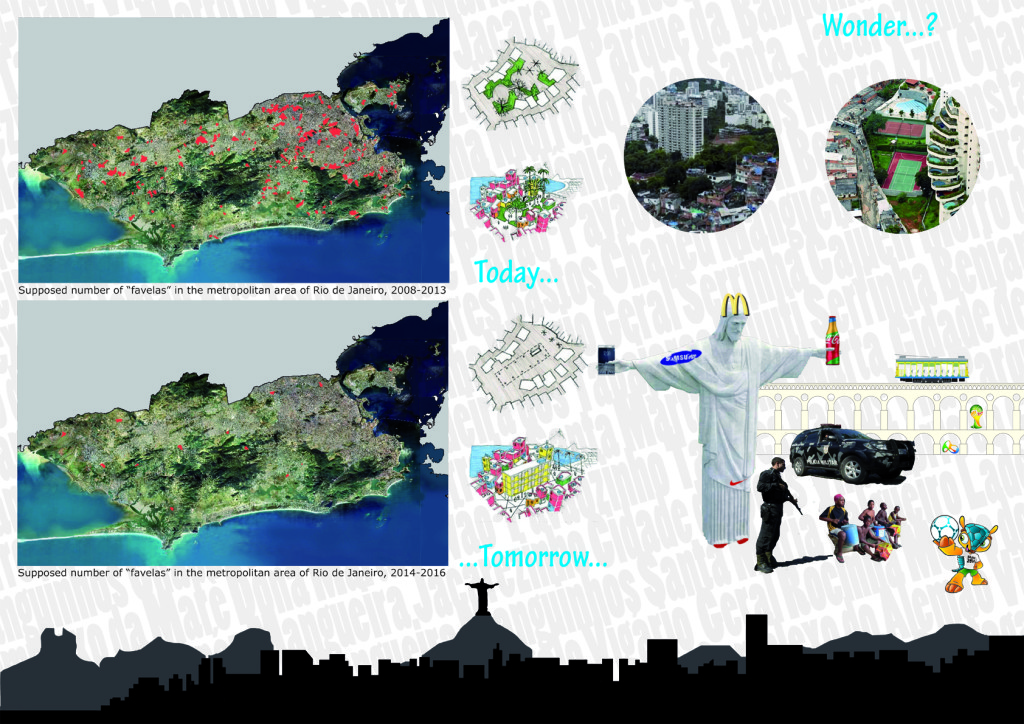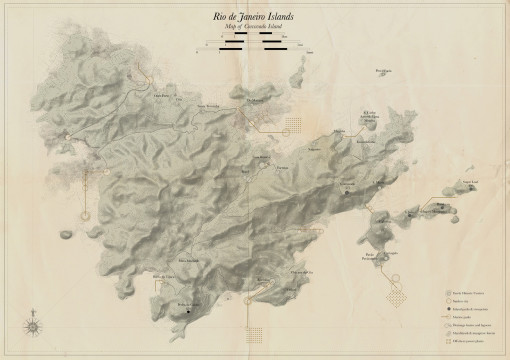Info:
Title: Sailing is necessary, living is not necessary - Code: b30a1Contest: Rio de Janeiro / 2013
By: Tiago Torres-Campos
Views: 9142 Likes: 8
Votes:
Alejandro Zaera-Polo 9 Jeffrey Inaba 8 Jeroen Koolhaas 7 Hernan Diaz Alonso 2 Cristiano Toraldo di Francia 8 Pedro Rivera 87.0
Sailing is necessary, living is not necessary
As the greatest human endeavour in the territory, a city corresponds to a serial vision in time. It exists in the present as a result of its past memories and its future beliefs. In the end of the 19th century, photographer Marc Ferrez created a vision for Rio. Using landscape as a palimpsest he captured the hilly city where men and nature thrived together. He also testified how the new planned city, the asfalto, was actually pushing away the poor from the waterfront into the steep sloped hillsides, the morros. The rich tried to build walls to erase and forget the poor but they actually needed each other, so they started living as an urban symbiosis. In the 1960’s, musician Caetano Veloso composed “The Argonauts”, an ode to the poem “Sailing is necessary, living is not necessary”, written by the Portuguese poet Fernando Pessoa. These words honoured life as the endless journey and founded Tropicalia which evoked the convergence of the asfalto and the morro as the essence of Brazil. Ferrez’s work offered a landscape vision; Veloso’s musical poetry offered an existential one. These two memories are carried over to a utopian future where Rio is no longer part of the continental Brazil but rather a recently formed archipelago. Assuming the rapid rise of carbon dioxide levels in the atmosphere (up to 800 ppm), the average global temperature would increase 5ºC degrees Celsius what would, in turn, raise sea levels up to 50 m. A dramatic event such as a great permanent flood would impact on Rio’s territory, especially because all mid-to-high class neighbourhoods by the water would submerge giving the favelas the possibility to settle in with a brand new condition. They would become the historic centres by adding a new transitional layer of public space and enhancing the coexistence of different social strata. This was Veloso’s vision: Brazil as a celebration of diversity. We imagine the sorrow of seeing the city swallowed by the water, but under such conditions human life would not disappear if one could redesign the urban and landscape relations. The new urban living conditions above 50 meters would place favelas as the new inland-sea hinges; they would become relational tissues recreating the relationship between dry and wetlands. One could also redefine the new islands’ interface land-sea by creating diverse wetlands (marshlands, drainage basins or mangrove forests), reactivating the hydrology schemes and reinforcing the landscape’s role. Favelas would even give access to the new marine landscapes with structures allowing connections, offshore energy production and the contemplation of Rio from new perspectives. The marine parks would enclose special spots where time would be compressed and acquire a memorial status allowing people to learn about the sunken city. They would become moments of celebration of the landscape as palimpsest where disgust would not disappear but rather give place, in time, to the possibility of wonder.
Info:
Title: Sailing is necessary, living is not necessary
Time: 4 agosto 2013
Category: Rio de Janeiro
Views: 9142 Likes: 8
Tags: -








